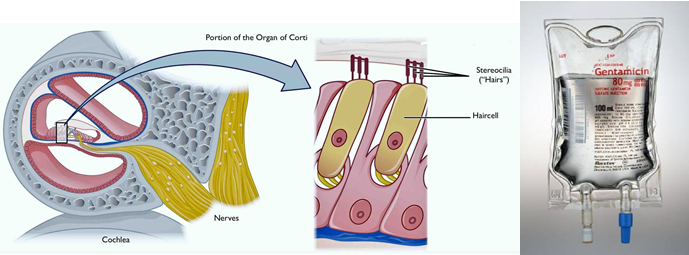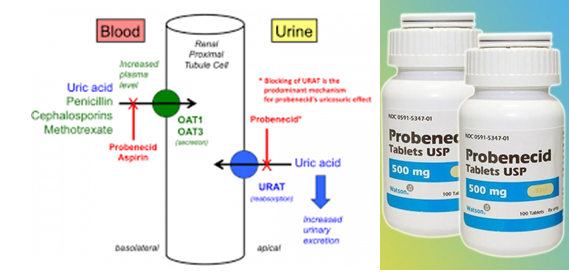A male client has been receiving the antibiotic gentamicin sulfate IV piggyback every 12 hours for several days. Which observations by the nurse indicate that the client may be experiencing an adverse effect of gentamicin?
Hearing has decreased.
Decreased blood urea nitrogen.
White blood cells count 6,000/mm3 (6x109/L).
Reports of photophobia.
The Correct Answer is A
Gentamicin sulfate is an aminoglycoside antibiotic that can cause ototoxicity, which is damage to the inner ear leading to hearing loss or balance problems. Therefore, a decrease in hearing is an indication that the client may be experiencing an adverse effect of gentamicin.
Option b, decreased blood urea nitrogen, is not an adverse effect of gentamicin, but it may indicate improvement in kidney function, which can be a positive outcome of treatment.
Option c, a white blood cell count of 6,000/mm3 (6x109/L), is within the normal range and is not necessarily an adverse effect of gentamicin.
Option d, photophobia, is not a common adverse effect of gentamicin and may indicate a different condition or medication effect.

Nursing Test Bank
Naxlex Comprehensive Predictor Exams
Related Questions
Correct Answer is D
Explanation
The client is experiencing syncope (fainting) due to a drop in blood pressure to 70/40 mm Hg, which is too low. This suggests that the client's blood pressure medications are reducing their blood pressure too much, resulting in hypotension. The rationale for the nurse's decision to hold the client's scheduled antihypertensive medications is to prevent further hypotension and allow the client's blood pressure to stabilize at a safer level.
Option a is incorrect because diuresis (increased urine output) is not a likely cause of the client's hypotension.
Option b is incorrect because the client's symptoms suggest hypotension due to reduced blood pressure, rather than drug toxicity.
Option c is incorrect because the antagonistic interaction among blood pressure medications would result in reduced effectiveness but would not necessarily cause hypotension.
Correct Answer is C
Explanation
Probenecid is a uricosuric drug that works by inhibiting the reabsorption of uric acid in the kidneys and promotes its excretion in the urine. This drug is used to treat gout and hyperuricemia (high levels of uric acid in the blood). Therefore, the nurse should explain to the client that the purpose of probenecid is to promote the excretion of uric acid in the urine and lower the levels of uric acid in the blood, which can help prevent gout attacks and kidney stones.
Options a, b, and d are incorrect as they do not accurately describe the mechanism of action or purpose of probenecid.

Whether you are a student looking to ace your exams or a practicing nurse seeking to enhance your expertise , our nursing education contents will empower you with the confidence and competence to make a difference in the lives of patients and become a respected leader in the healthcare field.
Visit Naxlex, invest in your future and unlock endless possibilities with our unparalleled nursing education contents today
Report Wrong Answer on the Current Question
Do you disagree with the answer? If yes, what is your expected answer? Explain.
Kindly be descriptive with the issue you are facing.
